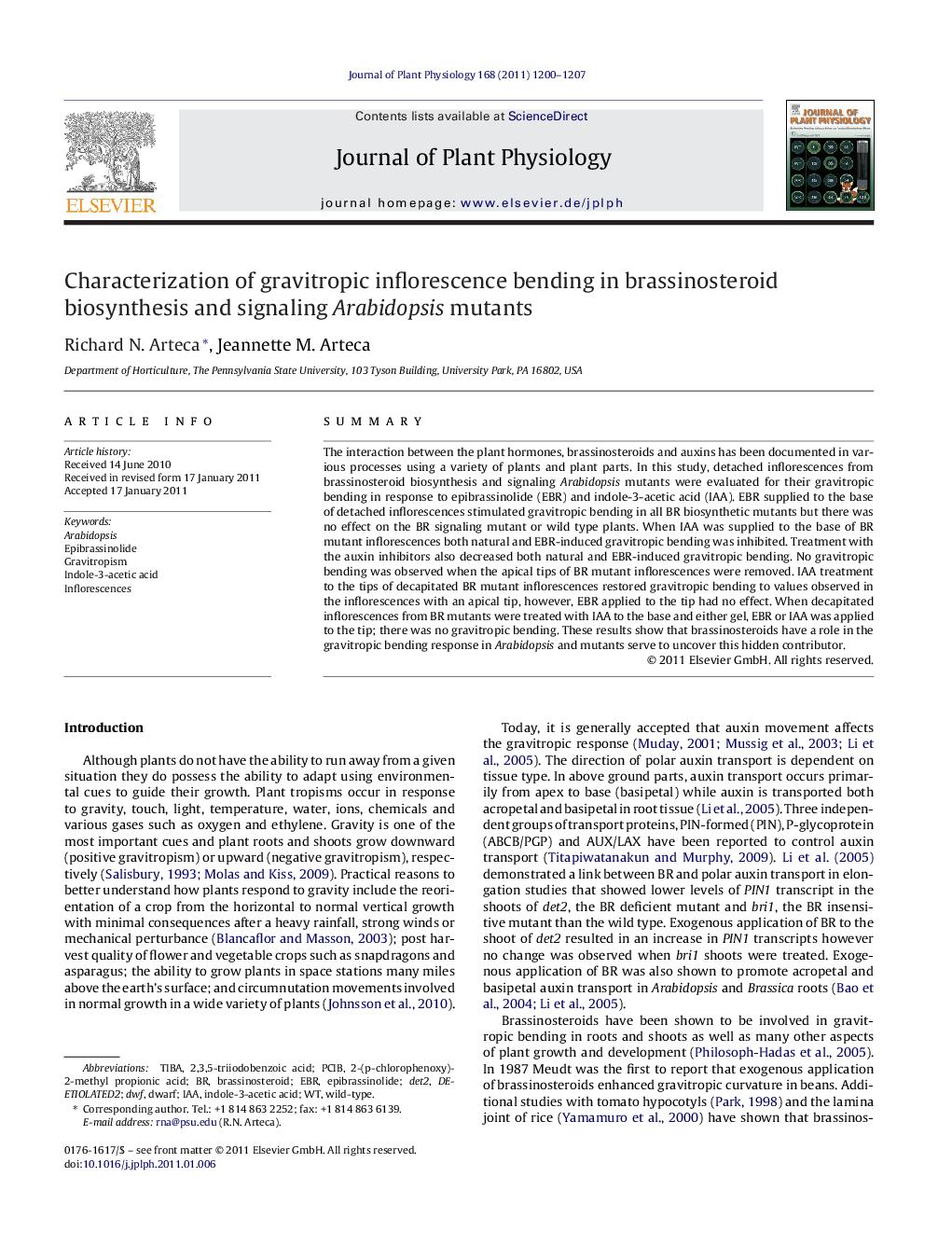| Article ID | Journal | Published Year | Pages | File Type |
|---|---|---|---|---|
| 2056334 | Journal of Plant Physiology | 2011 | 8 Pages |
SummaryThe interaction between the plant hormones, brassinosteroids and auxins has been documented in various processes using a variety of plants and plant parts. In this study, detached inflorescences from brassinosteroid biosynthesis and signaling Arabidopsis mutants were evaluated for their gravitropic bending in response to epibrassinolide (EBR) and indole-3-acetic acid (IAA). EBR supplied to the base of detached inflorescences stimulated gravitropic bending in all BR biosynthetic mutants but there was no effect on the BR signaling mutant or wild type plants. When IAA was supplied to the base of BR mutant inflorescences both natural and EBR-induced gravitropic bending was inhibited. Treatment with the auxin inhibitors also decreased both natural and EBR-induced gravitropic bending. No gravitropic bending was observed when the apical tips of BR mutant inflorescences were removed. IAA treatment to the tips of decapitated BR mutant inflorescences restored gravitropic bending to values observed in the inflorescences with an apical tip, however, EBR applied to the tip had no effect. When decapitated inflorescences from BR mutants were treated with IAA to the base and either gel, EBR or IAA was applied to the tip; there was no gravitropic bending. These results show that brassinosteroids have a role in the gravitropic bending response in Arabidopsis and mutants serve to uncover this hidden contributor.
